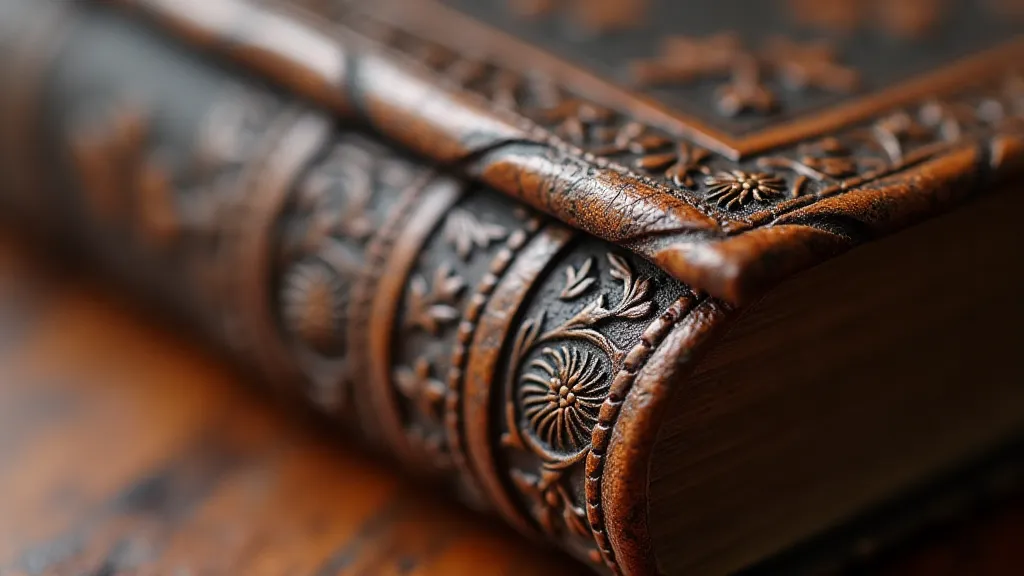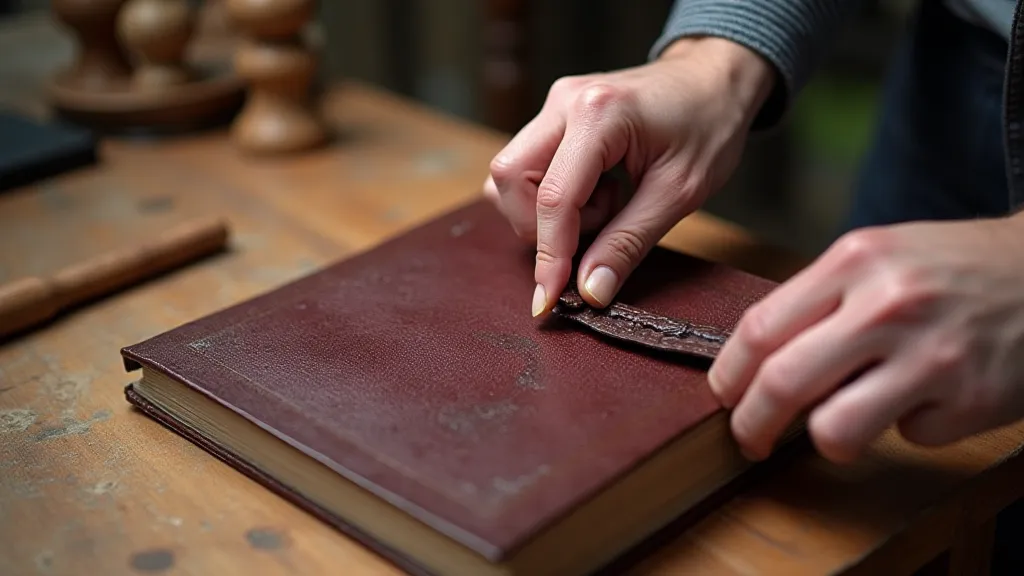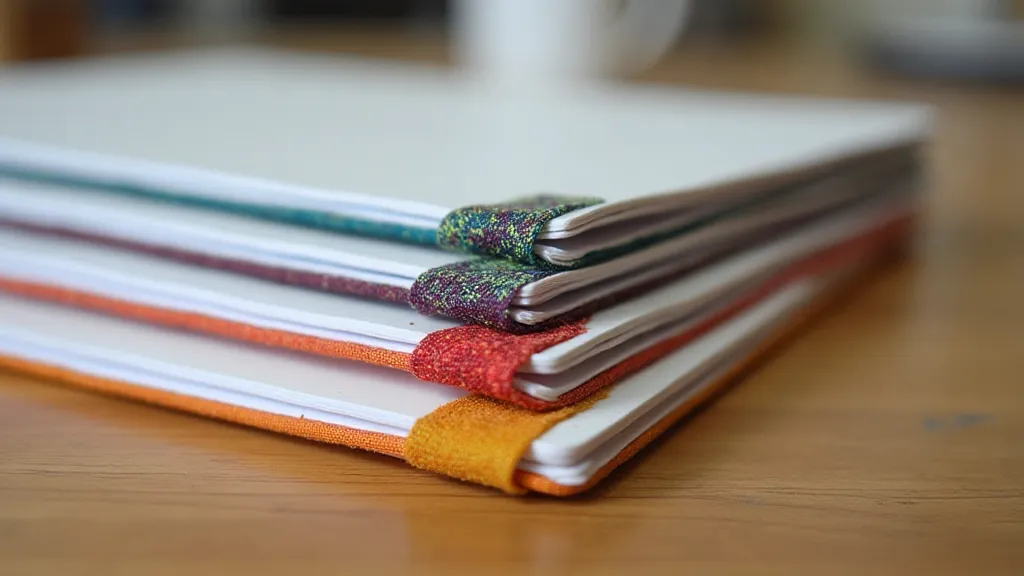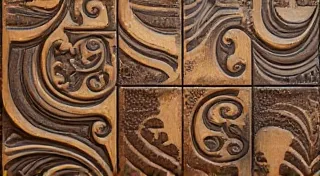Adventures in Endbandwerk: Mastering Decorative Leather Corner Reinforcements
There’s a certain romance to old things, isn’s there? A whisper of history clinging to worn edges, a story held within the cracks and imperfections. I often find myself drawn to antique accordions – their bellows scarred by countless performances, the ivory keys yellowed with age. Each imperfection tells a tale of laughter, song, and the passage of time. It's the same feeling I experience when I work with exquisitely bound antique books, particularly those adorned with endbandwerk – the decorative leather corner reinforcements so characteristic of fine, historical bookbinding.
Endbandwerk isn't merely functional; it’s a declaration of artistry. These reinforcements, applied to the corners of the leather covers, not only protect the vulnerable points of greatest stress but also elevate the book to a level of unparalleled beauty. They speak of meticulous craftsmanship, of a dedication to detail that’s increasingly rare in our fast-paced world. To truly understand endbandwerk, we need to journey back a little in time and appreciate the skill required to execute it.
A Glimpse into History: The Evolution of Endbandwerk
The practice of reinforcing book corners with leather stretches back centuries. Early examples, found in medieval manuscripts, were often simple, sometimes just small squares of tanned hide. As bookbinding techniques matured during the Renaissance and Baroque periods, so too did endbandwerk. The designs became more elaborate, incorporating intricate tooling, blind impressions, and contrasting leather colors. The rise of skilled bookbinders in monasteries and royal workshops fostered a culture of refinement and artistry that continues to inspire us today. The choices of leather itself played a vital role; different hides offered unique properties in terms of durability, texture, and color receptivity, impacting the final aesthetic. Sometimes, a particularly striking example showcases the transformative potential of the raw material – a process almost akin to the alchemist’s touch, revealing the underlying beauty within the hide.
The materials used also evolved. Goat and calfskin were common, but increasingly, carefully selected pieces of richly tooled and dyed leather were employed. Think about the investment involved! A single book could represent weeks, even months, of labor from a master binder. The value wasn’t simply in the words contained within, but in the physical embodiment of artistry itself. While calfskin offered a certain elegance, other hides provided unique textures and possibilities. Discovering beyond moroccans – exploring the diverse range of leather types available – is an essential step for any serious bookbinder.

The Tools of the Trade: A Bookbinding Tools List
Embarking on the journey of creating endbandwerk requires a selection of specialized tools. While modern adaptations exist, understanding the historical context helps appreciate the original tools' purpose. Here’s a basic list to get you started:
- Awl: For piercing holes in the leather and board.
- Needle: A large, blunt-tipped needle for leather stitching.
- Thread: Strong waxed linen thread is traditional and highly recommended.
- Bone Folder: Essential for smoothing and creasing leather.
- Cutting Knife (X-Acto): For precise leather cutting.
- Mallet: For striking tools, often a small wooden mallet.
- Leather Dye and Finishing Products: To achieve desired color and protect the leather.
- Edge Beveler: Used to create a rounded edge on the leather, though often this is done *before* applying endbandwerk.
Don’t be intimidated by this list. While some tools might seem specialized, many can be substituted or acquired gradually. Remember, the spirit of experimentation and adaptation is a vital part of the craft. The ethical sourcing of these materials, especially the leather itself, is a growing concern in modern craft – a move towards from hide to heritage, ensuring sustainable practices and respect for the animal from which the hide originates.
The Process: Binding Leather Spine and Creating Corner Reinforcements
Creating endbandwerk is a process of careful planning and execution. It’s not simply about gluing leather onto corners; it’s about creating a seamless, integrated design that enhances the overall aesthetic of the book.
- Leather Selection: Choose a high-quality leather that complements the book's overall design. Thicker leather (2-3mm) is generally best for durability.
- Pattern Creation: Design your endbandwerk pattern. This could be geometric, floral, or entirely abstract. Precise measurement and accurate pattern drafting are crucial. Remember to factor in the thickness of the boards when calculating dimensions.
- Cutting: Carefully cut the leather according to your pattern. Accuracy here is paramount.
- Tooling (Optional): If you're incorporating tooling, this is done *before* the leather is attached to the book. This requires experience and a good understanding of tooling techniques.
- Attachment: The endbandwerk is then carefully aligned and attached to the corners of the book boards. This often involves a combination of adhesive and stitching.
- Stitching: The stitching process is key to securing the endbandwerk and creating a strong, durable bond. A saddle stitch, where each stitch passes through both pieces of leather and the board, is commonly used.
The act of binding a leather spine is intimately linked to the endbandwerk process. The spine provides the structural backbone, and the endbandwerk acts as a visual and physical flourish at each corner. This is where the interplay between form and function truly shines. Achieving that intricate level of detail often necessitates a deep understanding of decorative techniques – an area explored further in the embossed impression.
Beyond the Technique: Parchment Paper Guide and Restoration Insights
While endbandwerk is primarily a leather-based technique, the surrounding processes contribute to the overall quality and preservation of the book. Utilizing parchment paper when working with delicate pages is essential for preventing damage. Parchment’s ability to protect surfaces from adhesive residue and handling marks is invaluable.

For those interested in restoration, understanding endbandwerk provides crucial insights. A damaged endbandwerk isn't always a sign of irreparable harm. Sometimes, careful cleaning and consolidation can restore its original appearance. However, attempting to replicate historically accurate endbandwerk requires a deep appreciation for the original techniques and materials. A rushed or poorly executed repair can often diminish the value of an antique book. Understanding the nuances of leather deterioration and appropriate conservation methods is paramount to preserving these works of art.
Creating Custom Notebooks: A Modern Application
While endbandwerk is deeply rooted in historical bookbinding, the principles can be applied to more contemporary projects. Creating custom notebooks with decorative leather corner reinforcements is a wonderful way to practice the technique and create beautiful, personalized objects. It's a chance to blend traditional craftsmanship with modern design. These projects often involve a simplification of the historical techniques while retaining the aesthetic appeal. The blend of historical precision with contemporary design proves to be an exciting avenue for modern crafters.
The beauty of endbandwerk lies not only in the finished product but also in the journey of creation. It’s a process that demands patience, precision, and a deep respect for the materials. As I carefully stitch each piece of leather, I find myself transported to a time when books were more than just repositories of information; they were works of art. And that, in itself, is a reward worth more than words can express.
The spirit of the old masters lives on in the meticulous attention to detail that defines endbandwerk. It’s a testament to the enduring power of craftsmanship and the enduring allure of beautiful, handmade objects. Ultimately, the process reinforces the value of slow, deliberate creation in a world often dominated by mass production.






